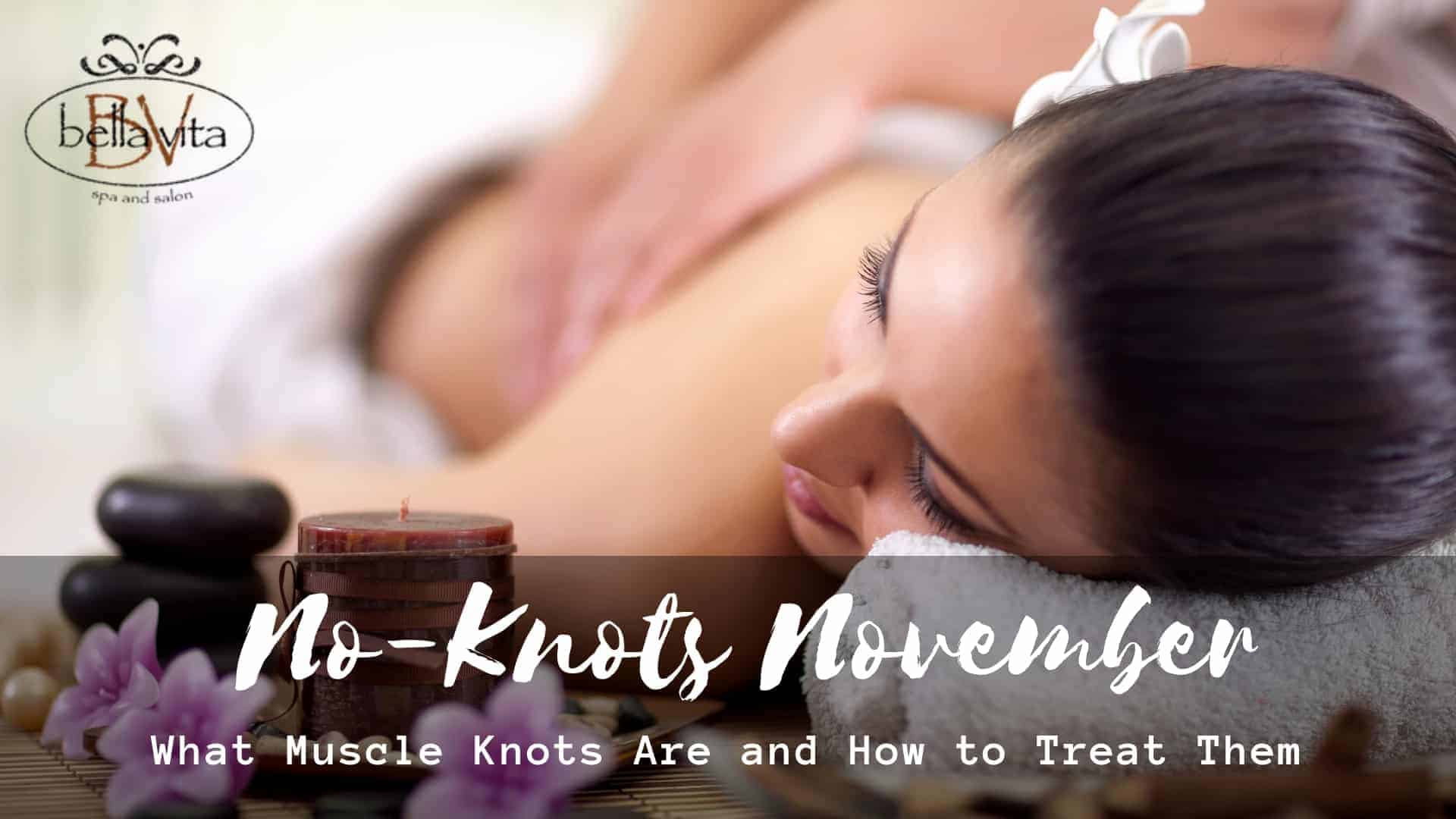
31 Oct “No-Knots November”–What Muscle Knots Are and How to Treat Them
Myofascial trigger points?
Yes, that’s what they’re called, at least that’s the medical term for them. However, most of us just know them as knots. No matter what they are called, they are always painful and can even be debilitating. So we’ve declared this month “No-Knots November.” Learn what muscle knots are and how to treat them.
What are muscle knots?
Muscle knots occur when our muscle fibers, or the underlying bands of tissue, called “fascia,” become tense and tight. This tension results in small, hard areas of muscle that are sensitive to the touch. If they are painful without being touched, these are called “active” trigger points. Most of the time, however, they are “latent,” which means they are not painful until someone touches or presses on them.
Either way, these knots are NOT normal (pun intended), and need to be dealt with. Pain is not their only symptom. Other symptoms may include:
- Hard lumps in muscle tissue
- Lumps deep inside the connective tissue
- Referred Pain (Pain that spreads to surrounding muscles when stimulated)
- Twitching or movement of muscle when pressed
- Jaw pain
- Lower back pain
- Ringing in the ears
- Tension headaches
- Loss of range of motion
Where do muscle knots occur?
Myofascial trigger points can appear anywhere in the body where muscle or fascia is located. Here some common areas where they occur:
- Calf muscles
- Shins
- Lower back
- Neck
- Shoulders
The trapezius muscle
The most common location of muscle knots is the trapezius muscle. This is one of the most important and most used muscles in the body. For that reason, it is also one of the most abused.
The trapezius is a triangle-shaped system of muscle fibers that extend from the neck and middle of the back to the shoulders. Poor posture, stress, and overuse, often cause fatigue, strain, and muscle knots in and around the trapezius.
What causes muscle knots?
Simply put, muscle knots are caused by tension, but that tension can stem from a variety of root causes. For most of us, the tension that finds its way into our muscles comes from one of these categories:
Mental or emotional stress
Repetitive activity
Poor posture
Long periods either sitting or standing in the same position
Preventing muscle knots
- Good stress management
- Paying attention to posture
- Varying posture while at work
- Stretching exercises
- Relaxation habits
How to treat muscle knots at home
- Heat or ice
- Stretching
- Self-massage
- Using foam rollers or tennis balls to apply pressure
- Anti-inflammatory medications
The best treatment is a professional massage
Home remedies can give some relief, but the very best way to deal with knots is to come in for a professional massage. At Bella Vita Spa and Salon, we’ve declared this month “no-knots November” because we know we can help. Let us help you stay “knot-free” this fall by scheduling an appointment with one of our incredible massage therapists.
Our highly-skilled therapists are experts in Swedish, Deep-Tissue, or Hot Stone Massage. Feel free to call 918-369-8482 and speak with one of our friendly spa coordinators if you need help deciding which one is right for you. If you already know what you need, click here to book online now.

No Comments